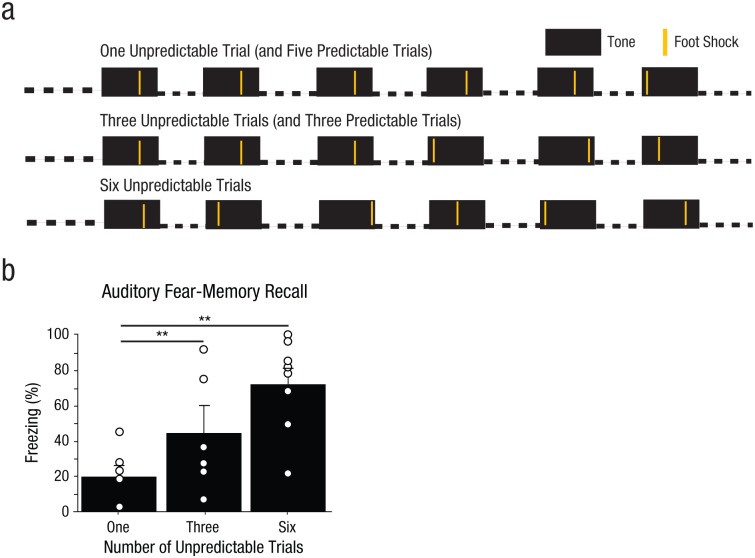Fig. 3.
Method and results from Experiment 2. Three groups of rats (n = 6–8 per group) were fear conditioned with pairings of a 30-s tone with a 1-s foot shock, as illustrated in (a); there was a 3-min interval after the tone. The three conditions had one, three, or six pairings of a tone and a foot shock. The average interval between tone onset and foot shock onset was held constant across the three groups. The day after fear conditioning, all the rats were returned to the conditioning context for 20 min. The day after that, the rats were placed in a novel context, and auditory fear recall was measured as average freezing across the first 2 of 15 tone presentations. In (b), results are shown separately for the two groups. The bars show the mean percentage of time that groups of rats displayed freezing behavior, and the small open circles represent the percentage of time that individual rats displayed freezing behavior. Error bars represent +1 SEM. Asterisks indicate significant differences between the group with one predictable trial and each of the other groups (**p < .01).

